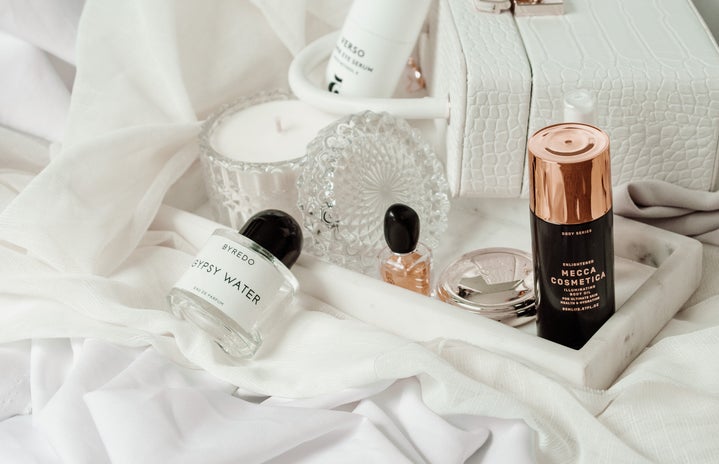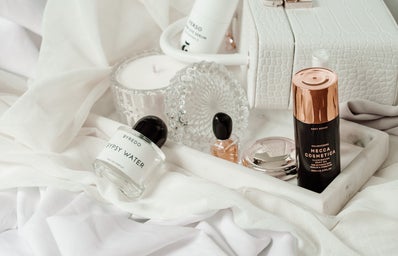In a society that marvels at a hairless physique, Fur is striking back.
It all comes down to the grain. Who would have thought there could be so many issues with the natural growth of hair on our bodies? Well, there is, and I have definitely felt the side effects of a society that praises a complete lack of hair. With the introduction of the body hair movement, which encourages an individual to choose what they do with their hair without societal pressure, I realized just how personal body hair can be. Especially for me. Although I felt empowered by the movement, I still found it difficult to talk about body hair. However, the introduction of brands such as Fur has pushed me to look at my body hair as less of a societal nonconformity and more as the natural part of my body. This is why I was eager to jump on a call with Fur Co-Founder Laura Schubert and talk about all things hair and stigma.
What is Fur?
Before we can even delve into body hair stigma, we need to understand the Fur brand.
Fur is a beauty brand with several products targeted at resolving skin and hair issues such as razor burn, ingrown hairs and dry skin, among others. A couple of their products include their Fur Oil, a lightweight oil meant to soften the skin and pubic hair, and their Ingrown Concentrate. Aside from high-quality products and stunning packaging, the brand is known for being inclusive, gender-neutral and frank.
What started as a conversation between Laura and her sister (who later moved on to other endeavors,) became a successful brand that empowers individuals to take control of body hair decisions and works to strip away what makes body hair so taboo. To continue bringing the idea to life, Laura teamed up with her best since seventh grade, Lillian Tung, and the two became, what they have termed, Fur Founders.
Fur’s push for body hair acceptance
Fur’s products may be praised for their effectiveness and quality (and for good reason), but the mission behind the Fur brand is what really pulled me in.
In an effort to be completely transparent, I want to share my own body hair issues. Honestly, I struggle to accept my own body hair. One of my largest insecurities is my dark, coarse body hair. From my arms to my legs and to my pubic region. And yes, I said pubic. This one word may cause your face to screw up or shoulders to cringe involuntarily (sometimes I still do the same), but have you ever thought about why that is? This reaction is just further testament to the fact that our body hair is considered a taboo subject –– something dirty, gross and unspeakable.
My dark and thick hair has bothered me since even before I began shaving my legs the summer before fourth grade. Before I started shaving my legs, my hair was soft and downy, but there was so much of it that I begged my mom to finally let me get rid of it. We started with a cream hair removal product until I grew impatient and picked up the razor lying on the side of the bathtub.
And yes I had (and still have) a ton of hair but what really irked me was that my legs never look completely clean-shaven. I have those pesky dark pores that make my legs appear peppered. This issue applies to my underarms and pubic region and has caused great insecurity all my life.
The only times I have truly talked about body hair, specifically pubic hair, is when I traded a razor for wax when I was 14 years old. Even as I was face to face with the woman who has waxed my pubic hair for over 5 years, I still felt the need to apologize for my coarse hair.
Enter Fur.
After scrolling past dreamy Fur ads on Instagram and reading about Emma Watson’s praise for their products, I knew I wanted to find out more about this brand.
When I spoke to Laura I wanted to truly understand what makes Fur a voice different from other brands that sell similar products.
“Part of the mission of Fur is making a safe, comfortable space where people feel safe talking about their body hair and pubic hair in particular, ” Laura said.
With a heavy focus on each individual taking control of their body hair regardless of gender, race or background, Fur is knocking down the barriers to open communication about one of the most natural bodily experiences. Laura summed it up as a “naturally inclusive topic” because “we all have body hair.”
To Laura, when making the decision to remove body hair one should ask themselves why they are choosing to do so. If it’s because the voice in our heads is saying that hairless is acceptable, then challenge that thought. I personally appreciated how she made sure to say that the body hair movement is not about advocating for zero hair removal, rather it is about truly choosing whatever we choose to do with our body hair without all of the added societal judgment and pressure. And this applies to everyone, not just women.
I continue to wax, shave and pluck, but I’ve embarked on a journey to accept my body hair. I no longer force myself to always have my legs shaved (I used to shave just to wear jeans every single day.) I am slowly growing accustomed to my fur.
Viceland, packaging and feminism
Fur’s success and distinct brand mission have sparked endless curiosity. So much so that an episode from Viceland’s show Hustler titled “Taboo Down There” was dedicated to spotlighting the brand and how to help it be taken seriously in the (typically conservative) business industry. This marks a special moment for Fur because in the show the brand was termed a “first mover.” Essentially, this means Fur broke into an untapped market. This recognition serves as a stamp of validation for the brand, especially when considering negative reactions to the brand during pre-production and after launching in 2016.
“It’s been a hard road,” Laura said, “people have laughed at me, slammed the door in my face –– I’ve been kicked out of stores.”
It all goes back to the taboo of body hair and, in particular, pubic hair.
This is where packaging and brand image play a role. If you browse the Fur website or scroll through the brand’s social media, you will discover a modern, clean image and minimalist packaging. Laura divulged that Fur is all about “upscale branding” because people are more comfortable with a brand that can be taken seriously. This is definitely something to consider due to negative reactions mentioned previously and the nature of the brand (goes back to pubic hair making people uncomfortable). Fur’s products are designed to be perched on your dresser and “have it be something that you don’t hide under your sink,” Laura said.
When asked about feminism in connection to Fur, Laura responded: “We are a feminist brand, for sure.” Fur products were designed with all individuals in mind, which is cemented in the piece of their tagline that reads “fur all.” The brand’s photo campaigns and social media posts are rooted in inclusivity and representation, which furthers the idea that Fur is made for everyone because the topic of body hair is relevant to every individual.
After my conversation with Laura, I realized just how important it is to talk about something as simple as body hair. It truly is a hefty discussion. Fur has carved out a space where taboos fade away, and the individual is able to seek out quality products while shedding the worry of what society would expect of their bodies. So, whether you wax, shave, laser or tweeze (or all of the above,) do it for you. Do with your fur what you will and take control of that decision.


